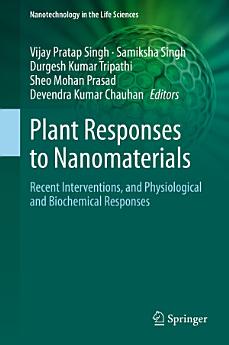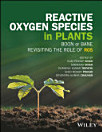Plant Responses to Nanomaterials: Recent Interventions, and Physiological and Biochemical Responses
Vijay Pratap Singh · Samiksha Singh · Durgesh Kumar Tripathi · Sheo Mohan Prasad · Devendra Kumar Chauhan
2021년 4월 · Springer Nature
eBook
334
페이지
report검증되지 않은 평점과 리뷰입니다. 자세히 알아보기
eBook 정보
The population of the world continues to increase at an alarming rate. The trouble linked with overpopulation ranges from food and water scarcity to inadequacy of space for organisms. Overpopulation is also linked with several other demographic hazards, for instance, population blooming will not only result in exhaustion of natural repositories, but it will also induce intense pressure on the world economy. Today nanotechnology is often discussed as a key discipline of research but it has positive and negative aspects. Also, due to industrialization and ever-increasing population, nano-pollution has been an emerging topic among scientists for investigation and debate. Nanotechnology measures any substance on a macromolecular scale, molecular scale, and even atomic scale. More importantly, nanotechnology deals with the manipulation and control of any matter at the dimension of a single nanometer. Nanotechnology and nanoparticles (NPs) play important roles in sustainable development and environmental challenges as well. NPs possess both harmful and beneficial effects on the environment and its harboring components, such as microbes, plants, and humans. There are many beneficial impacts exerted by nanoparticles, however, including their role in the management of waste water and soil treatment, cosmetics, food packaging, agriculture, biomedicines, pharmaceuticals, renewable energies, and environmental remedies. Conversely, NPs also show some toxic effects on microbes, plants, as well as human beings. It has been reported that use of nanotechnological products leads to the more accumulation of NPs in soil and aquatic ecosystems, which may be detrimental for living organisms. Further, toxic effects of NPs on microbes, invertebrates, and aquatic organisms including algae, has been measured. Scientists have also reported on the negative impact of NPs on plants by discussing the delivery of NPs in plants. Additionally, scientists have also showed that NPs interact with plant cells, which results in alterations in growth, biological function, gene expression, and development. Thus, there has been much investigated and reported on NPs and plant interactions in the last decade. This book discusses the most recent work on NPs and plant interaction, which should be useful for scientists working in nanotechnology across a wide variety of disciplines.
저자 정보
Dr. Vijay Pratap SinghRamanuj Pratap Singhdev Post Graduate College Dept of BotanyKoriya 497335Chhattisgarh, [email protected]
Dr. Samiksha SinghRanjan Plant Physiology and Biochemistry LaboratoryDept of BotanyUniversity of Allahabad211002 AllahabadUttar Pradesh, [email protected]
Dr. Durgesh Kumar TripathiMotilal Nehru National Institute of Technology211004 AllahabadUttar Pradesh, [email protected]
Dr. Sheo Mohan PrasadUniversity of Allahabad211004 AllahabadUttar Pradesh, [email protected]
Prof. Devendra Kumar ChauhanUniversity of Allahabad
211004 AllahabadUttar Pradesh, [email protected]
Dr. Samiksha SinghRanjan Plant Physiology and Biochemistry LaboratoryDept of BotanyUniversity of Allahabad211002 AllahabadUttar Pradesh, [email protected]
Dr. Durgesh Kumar TripathiMotilal Nehru National Institute of Technology211004 AllahabadUttar Pradesh, [email protected]
Dr. Sheo Mohan PrasadUniversity of Allahabad211004 AllahabadUttar Pradesh, [email protected]
Prof. Devendra Kumar ChauhanUniversity of Allahabad
211004 AllahabadUttar Pradesh, [email protected]
이 eBook 평가
의견을 알려주세요.
읽기 정보
스마트폰 및 태블릿
노트북 및 컴퓨터
컴퓨터의 웹브라우저를 사용하여 Google Play에서 구매한 오디오북을 들을 수 있습니다.
eReader 및 기타 기기
Kobo eReader 등의 eBook 리더기에서 읽으려면 파일을 다운로드하여 기기로 전송해야 합니다. 지원되는 eBook 리더기로 파일을 전송하려면 고객센터에서 자세한 안내를 따르세요.






